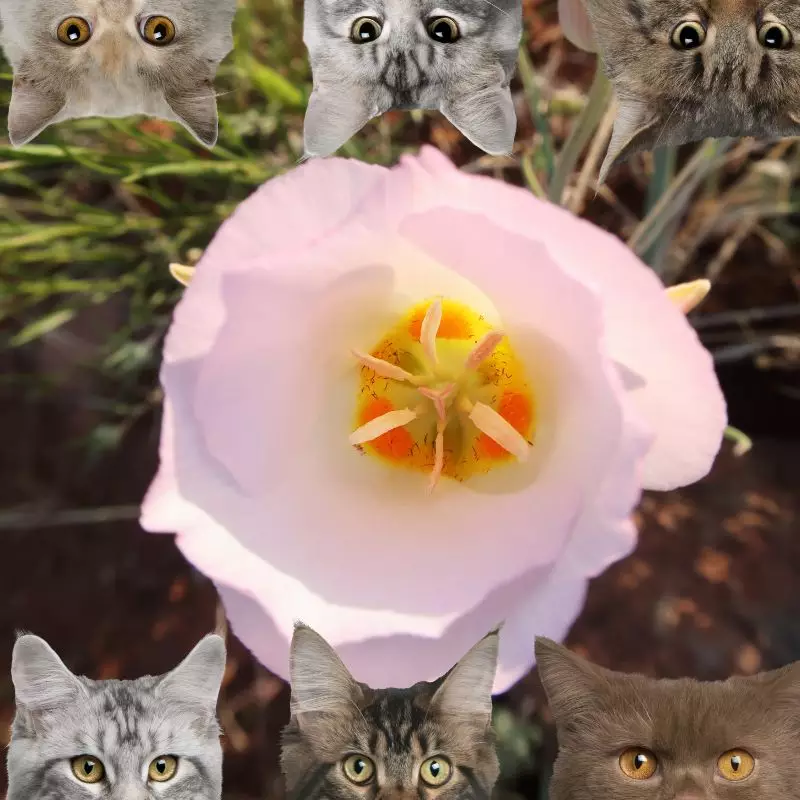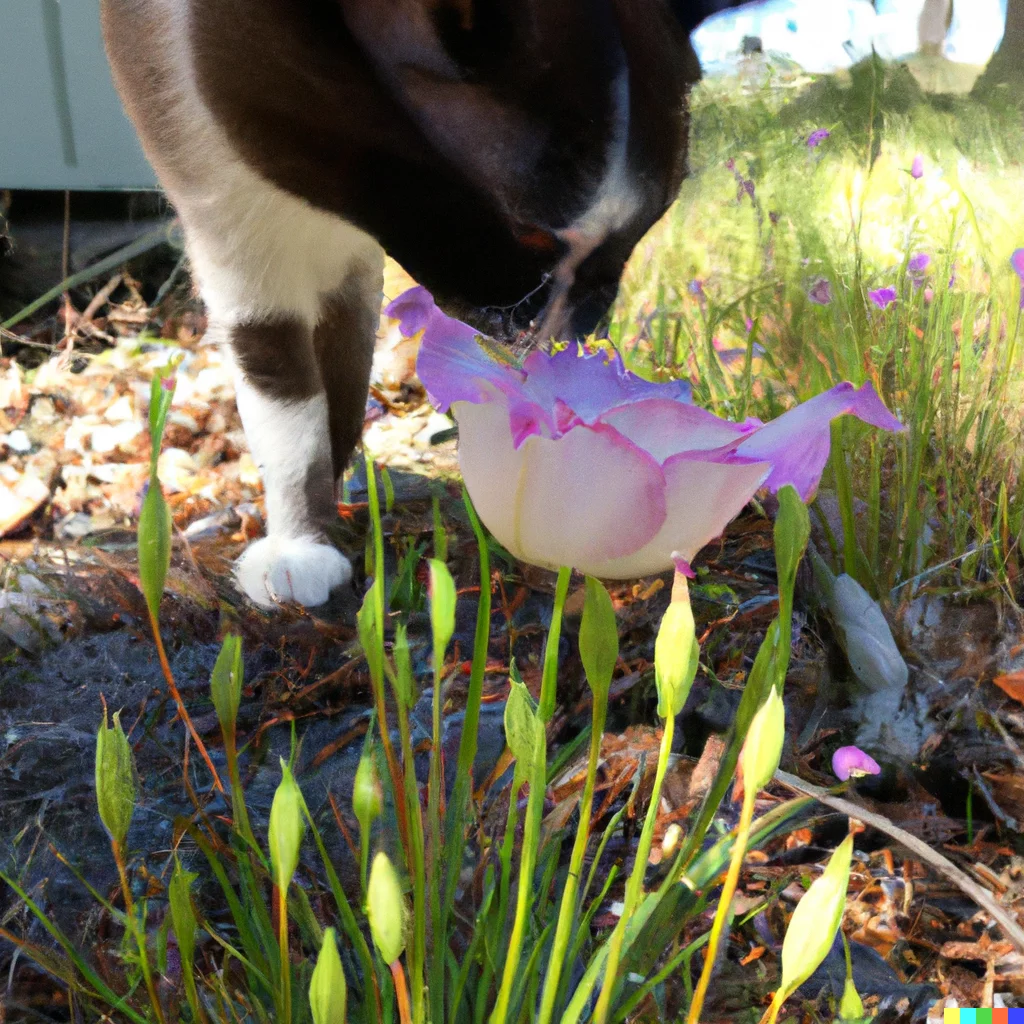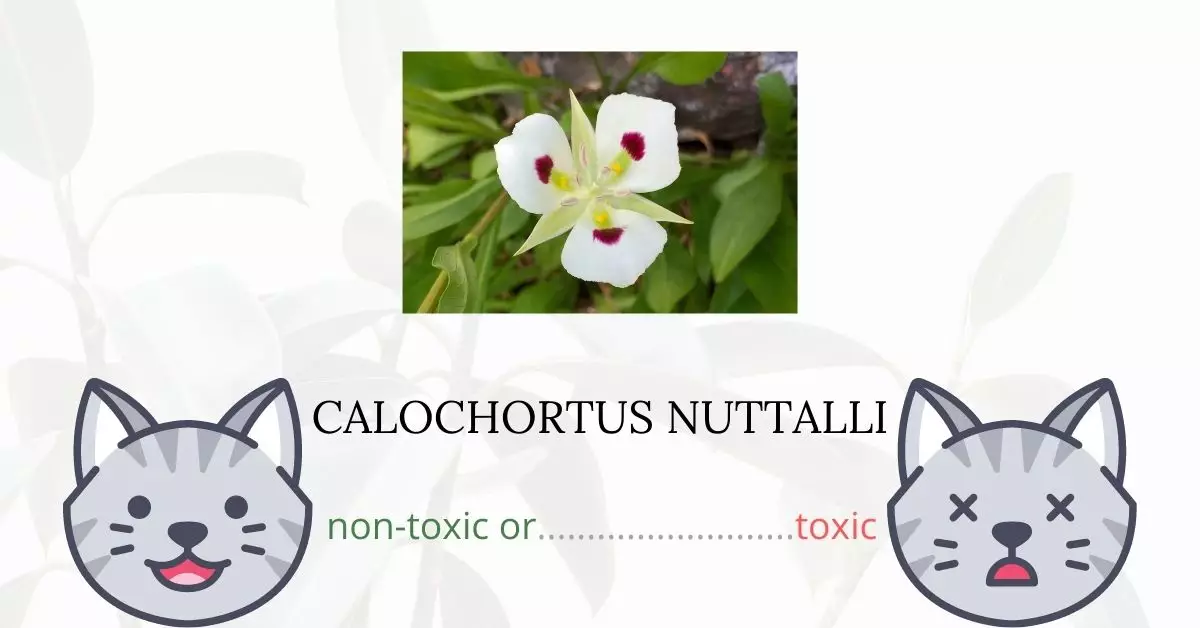Calochortus nuttallii, more commonly known as the Sego Lily, is not toxic for cats.
To ensure the accuracy and reliability of this information, this article has been written in collaboration with a team of experienced DVMs (doctors of veterinary medicine). Through their expert insights, we can provide up-to-date and precise data on the potential risks associated with various plants, focusing on Calochortus Nuttallii in this instance. In addition to the insights from our DVM collaborators, we have also conducted thorough research on high-authority websites such as the ASPCA and PetMD.
It is worth noting that while the ASPCA has listed the Sego Lily as non-toxic for cats, the act of allowing your cat to consume any plant should always be approached with caution.
Can Cats Eat Calochortus Nuttallii?

Cats will not suffer from severe side effects or life-threatening situations if they happen to eat a little bit of Calochortus nuttallii. Still, you should not allow your cat to eat this plant regularly or in large doses.
Plants are difficult to digest because cats do not have enough enzymes to digest them. As carnivorous animals, plants are not suitable for cats’ bodies. Thus, including them in a cat’s regular diet is not advisable.
You should also be aware that other factors might induce sickness and toxicity in cats when they consume a plant. Commercial fertilizers and insecticides, for example, may include harmful compounds that might harm cats. If your cat ingests a piece of this plant, he or she may develop poisoning symptoms.
What is Calochortus Nuttallii?

Calochortus nuttallii has several common names, including Sego Lily, Star Tulip, Mariposa Lily, Cat Ear, and Butterfly Tulip. It is a bulbous perennial plant found only in the Western United States. It is Utah’s state flower.
Calochortus nuttallii, often known as sego lily, can reach a height of 15 to 45 cm. It has linear leaves and produces one to four flowers. The flowers are characterized by three white petals that are tinged purple (occasionally magenta), and a purplish ring radiates from the golden base. In early July, the plant blooms with flowers up to three inches wide.
Native Americans used the sego lily’s bulbs, seeds, and blooms in their cooking. The bulbs were usually roasted, boiled, or ground into porridge. The Hopi ceremonially used the yellow blossom.
Keeping Cats Away From Calochortus Nuttallii

If you have sego lilies at home or even other plants, you might want to protect them from your nibbling felines. There are several techniques you may attempt to keep your cats away from your plants.
You may try using natural deterrents which are sold in supermarkets and online stores. Or much better, you can dilute the vinegar with water and spray it on your plants. Cats hate the sour smell of vinegar so this will make them avoid getting near your plants.
Another trick is to wrap aluminum foil around your plant pots. This will also prevent your felines from getting near your plants since they do not like the crinkly sound and texture of aluminum foil.
Another method is to place sharp-edged pebbles or other objects on top of the dirt. This can prevent your cat from misusing the container or simply messing with the plant. Make sure that the object used does not interfere with the growth of your plant.
Plants to Avoid For Your Cats
If you are a cat owner and unsure if the plants growing in your yard are harmful to your cats, check out this list of toxic plants for cats. You can also check our list of non-toxic plants for cats.





